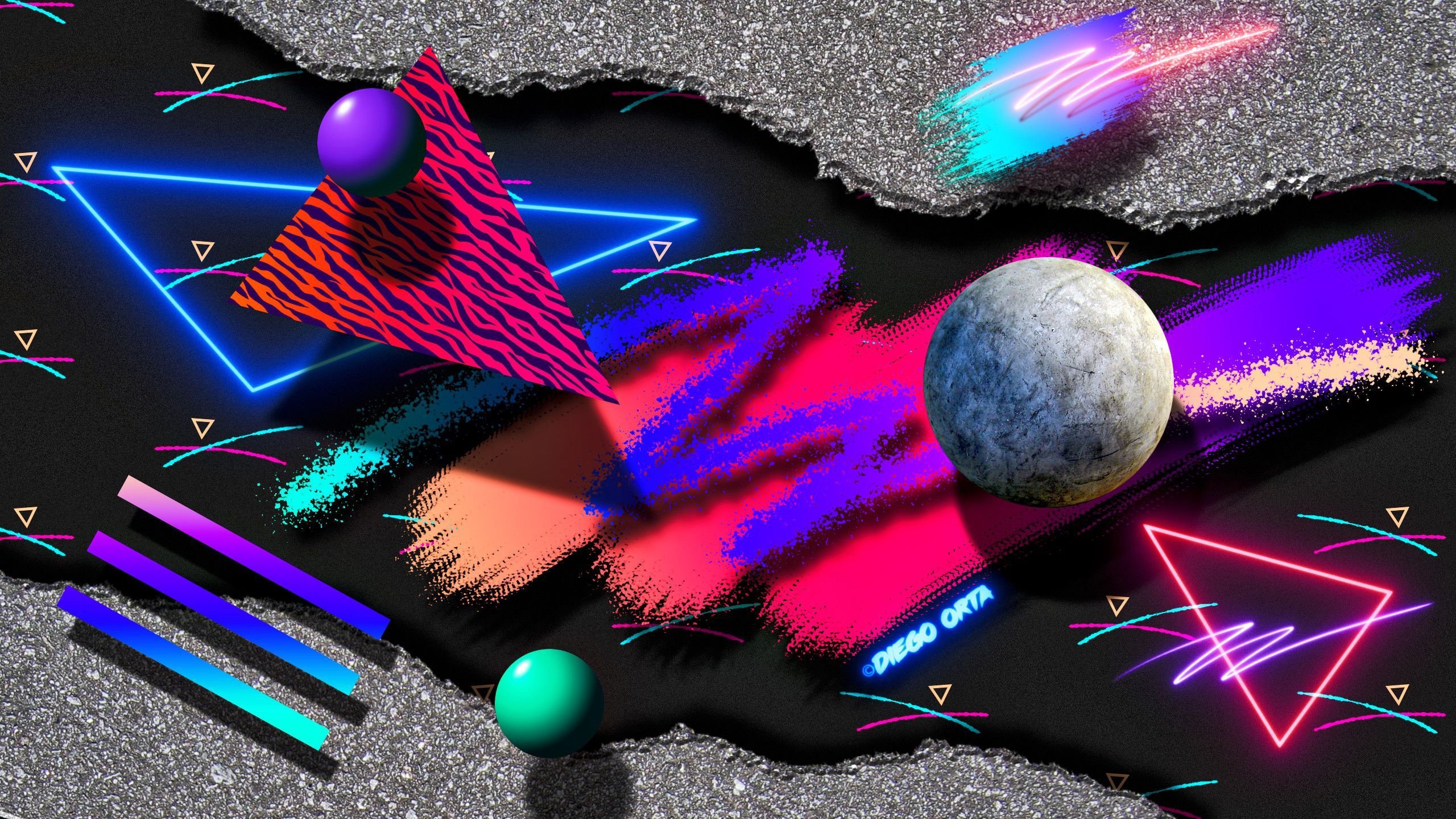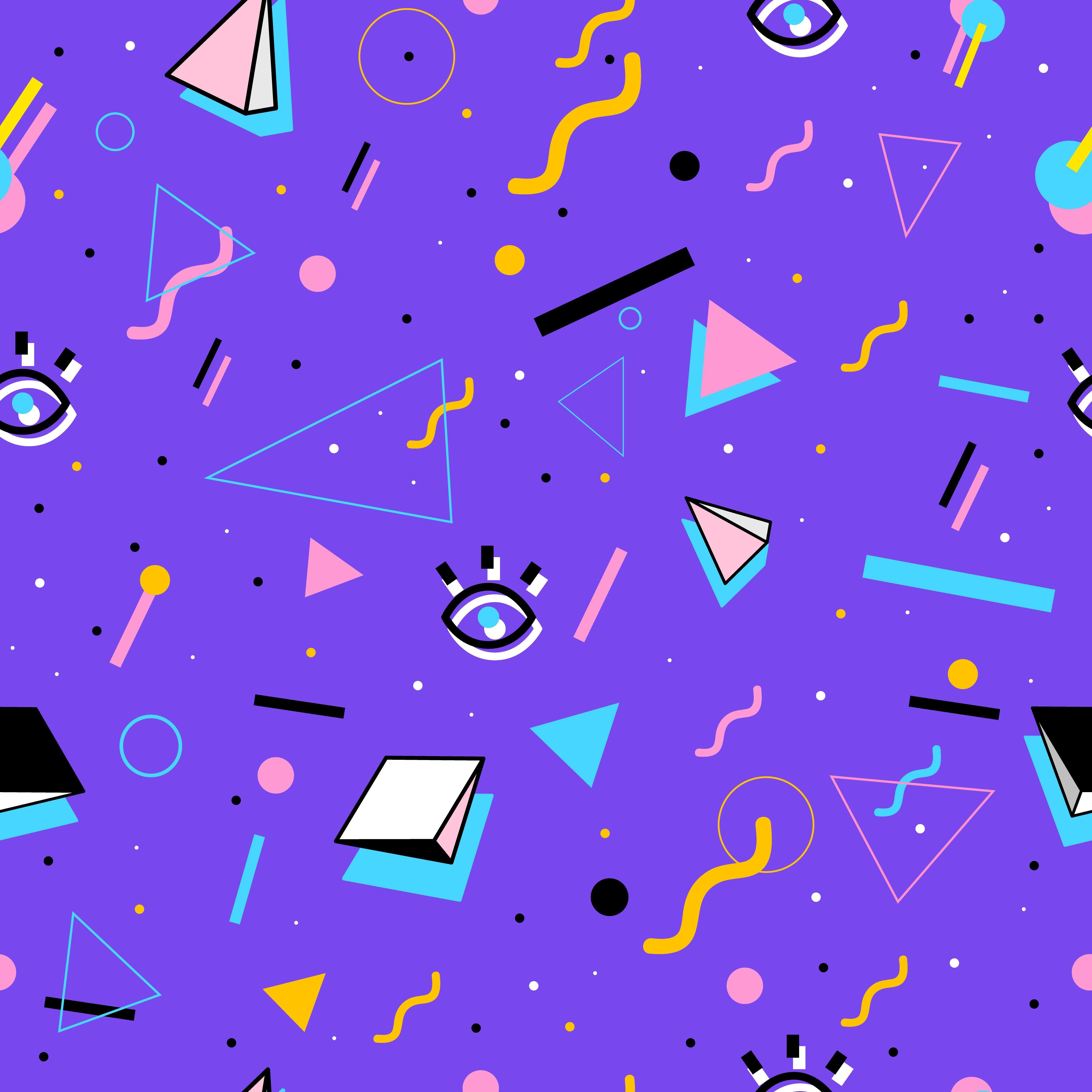Design Elements and Patterns

80s wallpapers were a bold and eclectic reflection of the era’s vibrant culture. They featured a mix of geometric shapes, bold colors, and abstract motifs, creating a visually stimulating and energetic aesthetic.
Geometric Shapes
Geometric shapes were a defining characteristic of 80s wallpapers. Squares, triangles, circles, and zigzags were commonly used to create dynamic patterns. These shapes often overlapped and intersected, forming complex and eye-catching designs.
The bold and vibrant patterns of 80s wallpaper evoke a sense of nostalgia. But if you crave a more contemporary touch, consider exploring cute wallpaper hd. Its whimsical designs and soft hues add a playful charm to any space.
Yet, the essence of 80s wallpaper remains, with its geometric shapes and retro-inspired motifs, creating a harmonious blend of past and present.
Bold Colors
80s wallpapers were not afraid of color. Bright hues like pink, blue, yellow, and green were often paired with contrasting shades to create a sense of vibrancy and energy. Neon colors were also popular, adding a futuristic touch to many designs.
Abstract Motifs
Abstract motifs were another key element of 80s wallpapers. These motifs included swirls, splatters, and other organic forms. They added a touch of playfulness and spontaneity to the overall design.
Influence of Memphis Design and Postmodernism
The Memphis design movement and postmodernism had a significant influence on the aesthetics of 80s wallpapers. Memphis design was characterized by its use of bold colors, geometric shapes, and playful patterns. Postmodernism embraced a mix of styles and influences, resulting in eclectic and often ironic designs.
The 80s wallpaper aesthetic is a vibrant and eclectic mix of colors and patterns. Brown wallpaper, in particular, was a popular choice during this era, and it continues to be a stylish option today. Whether you’re looking to add a touch of nostalgia to your home or simply want to create a warm and inviting space, brown wallpaper aesthetic is a great way to do it.
The rich hues and intricate patterns of 80s wallpaper are sure to add personality and style to any room.
Color Palette and Combinations

The 80s witnessed a surge of vibrant and bold colors that became synonymous with the era’s aesthetics. Wallpapers embraced this chromatic explosion, featuring a kaleidoscope of hues that transformed walls into dynamic canvases.
Among the most popular colors were neon shades such as hot pink, electric blue, and acid green. These hues radiated an energetic and playful vibe, reflecting the optimistic and exuberant spirit of the time. Pastel shades, such as soft lavender, peach, and mint green, added a touch of whimsy and nostalgia.
Primary Color Schemes
- Neon Explosion: A combination of bright neon hues, such as pink, blue, green, and yellow, created a vibrant and eye-catching effect.
- Pastel Paradise: Soft pastel shades, such as lavender, peach, and mint green, evoked a sense of tranquility and nostalgia.
- Monochromatic Magic: Wallpapers using a single color in different shades, from light to dark, created a sophisticated and elegant look.
- Color Blocking: Bold blocks of contrasting colors, such as black and white or blue and orange, added a graphic and modern touch.
Materials and Textures: 80s Wallpaper

In the realm of 80s wallpapers, materials played a pivotal role in shaping their durability, texture, and overall aesthetic.
Vinyl, a synthetic material known for its resilience and moisture resistance, emerged as a popular choice. Its smooth surface and ability to withstand wear and tear made it ideal for high-traffic areas. Paper, a more traditional material, offered a wider range of patterns and designs, but its susceptibility to fading and moisture limited its lifespan. Fabric, with its inherent softness and warmth, brought a touch of luxury to walls. However, its delicate nature required careful handling and maintenance.
Innovative Techniques, 80s wallpaper
Beyond the basic materials, innovative techniques were employed to create unique textures and finishes. Flock, a process involving the application of short fibers to the wallpaper surface, added a velvety touch. Embossing, the creation of raised patterns through pressure, introduced depth and dimension to the designs.